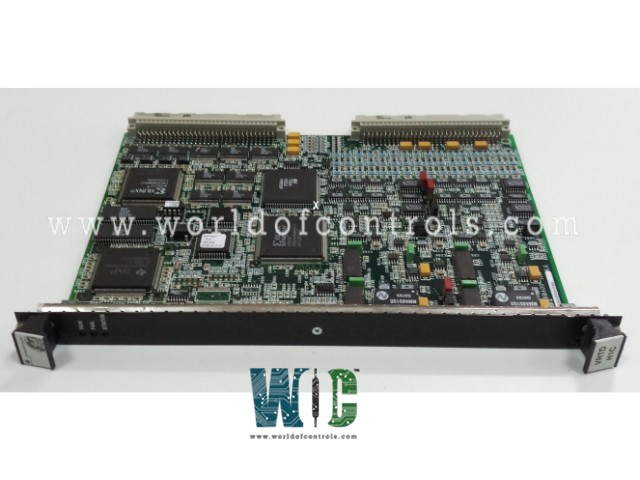
World Of Controls understands the criticality of your requirement and works towards reducing the lead time as much as possible.
IS200VRTDH1CBA - RTD Processor Board is available in stock which ships the same day.
IS200VRTDH1CBA - RTD Processor Board comes in UNUSED as well as REBUILT condition.
To avail our best deals for IS200VRTDH1CBA - RTD Processor Board, contact us and we will get back to you within 24 hours.
Part No.: IS200VRTDH1CBA
Manufacturer: General Electric
Country of Manufacture: United States of America (USA)
Number of channels: 16 channels
Span: 0.3532 to 4.054 V
A/D converter resolution: 14-bit resolution
Scan Time: Normal scan 250 ms (4 Hz)
Fast scan: 40 ms (25 Hz)
Power consumption: Less than 12 W
Product Type: RTD processor board
Availability: In Stock
Series: Mark VI
IS200VRTDH1CBA is an RTD processor board developed by GE. It is a part of the Mark VI control system. The board is designed to accept inputs from 16 RTDs, each utilizing a three-wire configuration. This compatibility ensures seamless integration with a wide range of RTD sensors commonly employed for temperature measurement applications. The RTD inputs from the sensors are wired to the RTD terminal board, which serves as the interface between the sensors and the processor board. This connection facilitates the transmission of temperature data from the sensors to the processor board for further processing. The board offers the flexibility to connect to the DRTD DIN-type terminal board if required. This option provides versatility in system configuration, allowing users to adapt the setup based on specific application needs. Cables equipped with molded fittings are utilized to establish connections between the terminal board and processor board. These cables ensure secure and reliable data transmission, maintaining signal integrity throughout the system.
The WOC team is always available to help you with your Mark VI requirements. For more information, please contact WOC.
What is IS200VRTDH1CBA?
It is an RTD processor board developed by GE under the Mark VI series.
How are high-frequency decoupling and signal integrity ensured for RTD signals on the boards?
All RTD signals undergo high-frequency decoupling to ground at the signal entry points. This crucial design feature helps mitigate the impact of high-frequency noise, ensuring signal integrity and accurate temperature readings from the RTDs.
How is the multiplexing of RTDs coordinated on the boards?
RTD multiplexing is meticulously coordinated by redundant pacemakers. This redundancy ensures that the loss of a single cable or the failure of a single board does not result in the loss of any RTD signals in the control database. The pacemakers synchronize the multiplexing process, enhancing the system's robustness and fault tolerance.
How do the VRTD in R, S, and T operate in reading RTDs simultaneously?
VRTD boards in R, S, and T operate by reading RTDs simultaneously but with a specific skewing mechanism. The readings are offset by two RTDs, meaning that when one board (e.g., R) is reading a particular RTD (e.g., RTD3), the other boards (S and T) are reading different RTDs (e.g., RTD5 and RTD7, respectively). This strategic skewing ensures that the same RTD is not excited by two boards simultaneously, preventing the generation of inaccurate readings and maintaining data integrity.